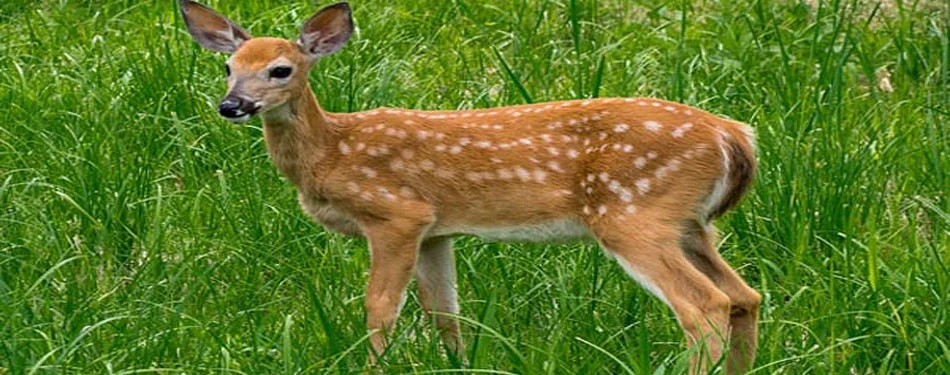Exploring the Diverse Mammals of the Andaman and Nicobar Islands

In addition to their stunning beauty, the Andaman and Nicobar Islands, a breathtaking
isle in the Bay of Bengal, are known for their rich ecosystems. Because of their
diversity and uniqueness, the Andaman Islands' mammals are particularly special among
the many different kinds of life that call these islands home. This blog discusses some
of the unique wildlife, vibrant biodiversity, and wide variety of mammals that make the
Andaman Islands a fascinating travel destination for nature lovers.
The Mammals of Andaman

Numerous species of mammals can be found in the Andaman and Nicobar Islands, some of
which are endemic, or unique to this region of the world. This unique aspect contributes
significantly to the biodiversity of Andaman. The dense tropical forests, mangroves, and
coral reefs provide perfect habitats for these species to thrive. From small bats to
large dugongs, the mammals of Andaman showcase the ecological diversity of these
islands. These islands are home to a variety of mammals ranging from small insectivores
to larger herbivores and carnivores, each adapting uniquely to the tropical environment.
One important mammal is the Andaman Wild Boar, a species that is unique
to these islands.
It is larger and has a darker coat compared to its mainland counterparts. One of the key
features of the mammalian population here is its isolation and evolutionary uniqueness.
The presence of such endemic species shows that the isolation of these islands for
thousands of years has led to a separate evolutionary path for its wildlife,
contributing to the uniqueness of the wildlife of Andaman. This has resulted in a high
degree of endemism and a unique ecosystem that supports a variety of life forms.
Biodiversity of Andaman: A Rich Tapestry
The biodiversity of Andaman is truly unique, with its lush rainforests and mangroves that
are home to a variety of life forms, some of which are endemic and others that have
adapted over time. The rich flora provides them with enough food and shelter, creating
an ideal environment for their survival.
Apart from the terrestrial mammals, the Andaman Sea is also filled with aquatic animals.
The coral reefs and marine parks are home to dolphins, dugongs, and a variety of sea
turtles, adding to the biodiversity of Andaman. These marine mammals play a crucial role
in the ecological balance and are a major attraction for wildlife enthusiasts and
researchers.
A Closer Look at the Wildlife of Andaman

While the focus here is on mammals, the wildlife of Andaman surrounds a broader spectrum
including birds, reptiles, and marine life. The islands are recognized as one of the
world's biodiversity hotspots, with several species listed as endangered or vulnerable.
The conservation efforts are made towards protecting these unique species and their
habitats, ensuring the islands remain a wildlife sanctuary.
The Andaman forests are alive with the sounds of numerous bird species, while the
undergrowth is home to reptiles like the Andaman Cobra and various species of lizards.
These creatures, along with the mammals, all represent the wildlife of Andaman.
The Aquatic Animals of Andaman:

The aquatic animals of Andaman are an important part of the islands' wildlife. The
surrounding waters are a biodiversity hotspot, home to a variety of marine life
including whales, dolphins, and the endangered dugong, often referred to as the "sea
cow." . Among them, the Dugong, also known as the sea cow, stands out due to its size
and unique feeding habits. These marine mammals are vital to the marine ecosystem and
are proof of the rich aquatic life that the Andaman Sea supports.
The coral reefs around the islands provide food and shelter to various species of fish,
sea turtles, and other marine organisms. The protection of these aquatic animals and
their habitats is important for maintaining the ecological balance and biodiversity of
Andaman.
State Animal of Andaman: The Dugong

The Dugong holds a place of pride as the state animal of Andaman. This marine mammal is a
symbol of the delicate balance of the island's ecosystems and represents the
conservation efforts in the region. The conservation of the dugong and its habitat is of
importance, reflecting the islands' commitment to preserving its natural heritage and
biodiversity. The Dugong's presence in the waters around the Andaman and Nicobar Islands
highlights the rich aquatic life and the need for sustainable practices to protect this
fragile environment.
Conservation efforts for the Dugong and other endangered species are made to preserve the
unique biodiversity of Andaman. These initiatives not only help in protecting these
animals but also ensure the health and continuity of the islands' ecosystems.
Conclusion
The Andaman and Nicobar Islands are a true paradise for nature lovers and wildlife
enthusiasts. The diverse mammals of Andaman, along with the rich biodiversity, make
these islands a unique ecological habitat. From the dense forests to the vibrant coral
reefs, the wildlife of Andaman is an example to the natural beauty and ecological
significance of these islands.
As we explore the diverse mammals and the aquatic animals of Andaman, we are reminded of
the importance of conservation and the role each one of us plays in preserving this
natural heritage. The state animal of Andaman, the dugong, serves as a symbol of the
islands' biodiversity and a reminder of our responsibility towards these magnificent
creatures and their habitats. By understanding and appreciating the mammals of Andaman
and the islands' biodiversity, we can ensure that this paradise remains taken care of
and vibrant.




